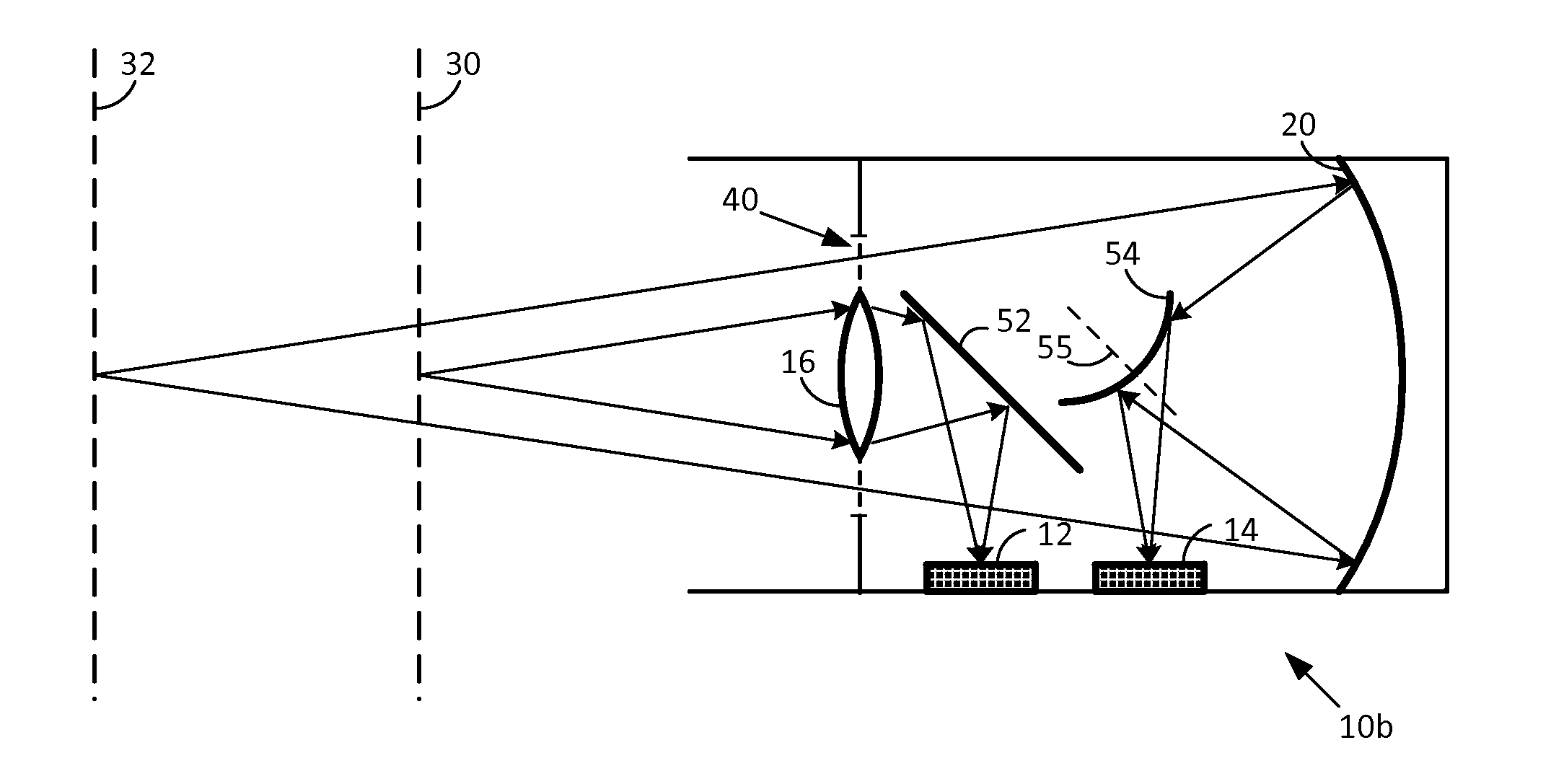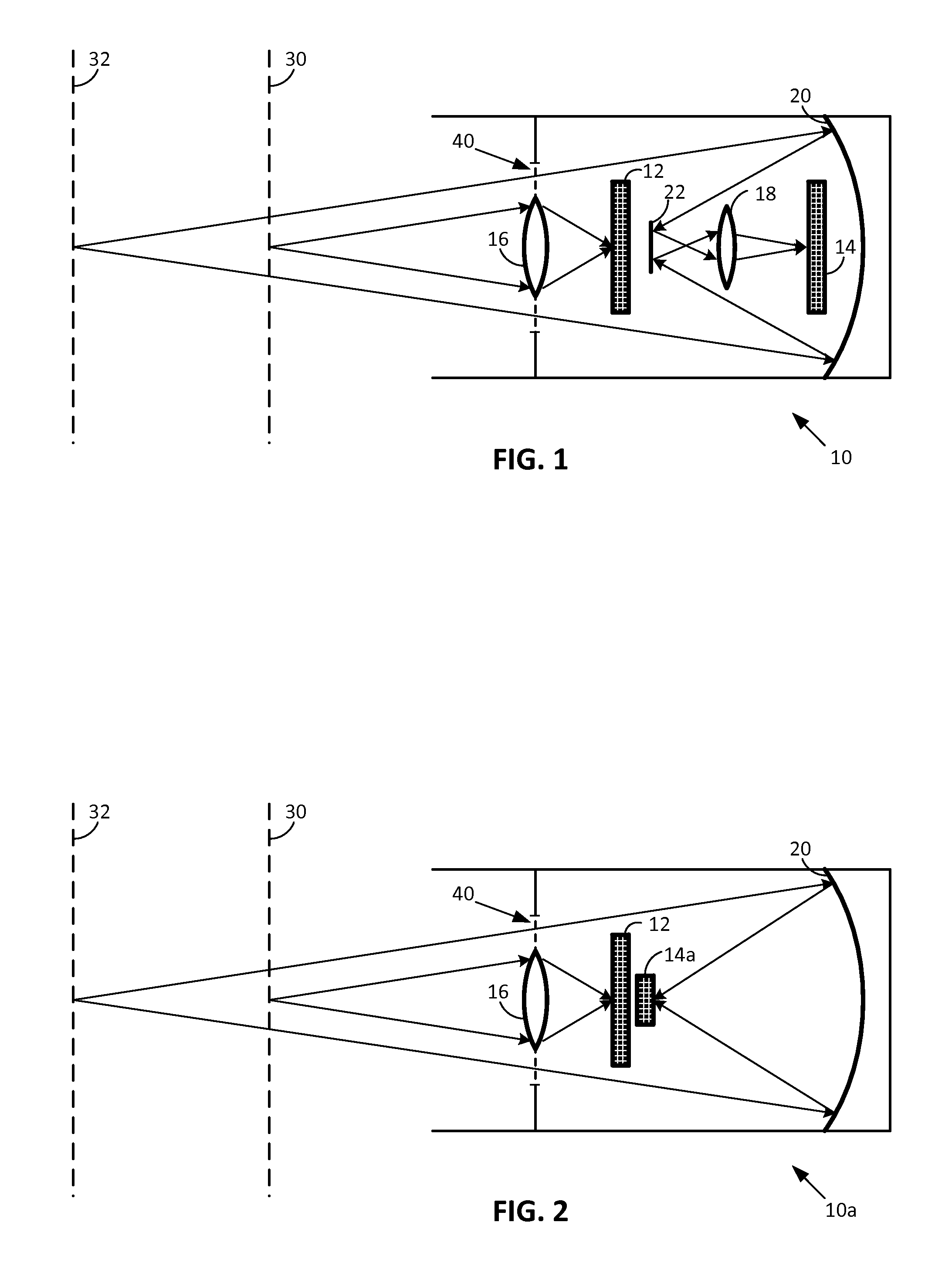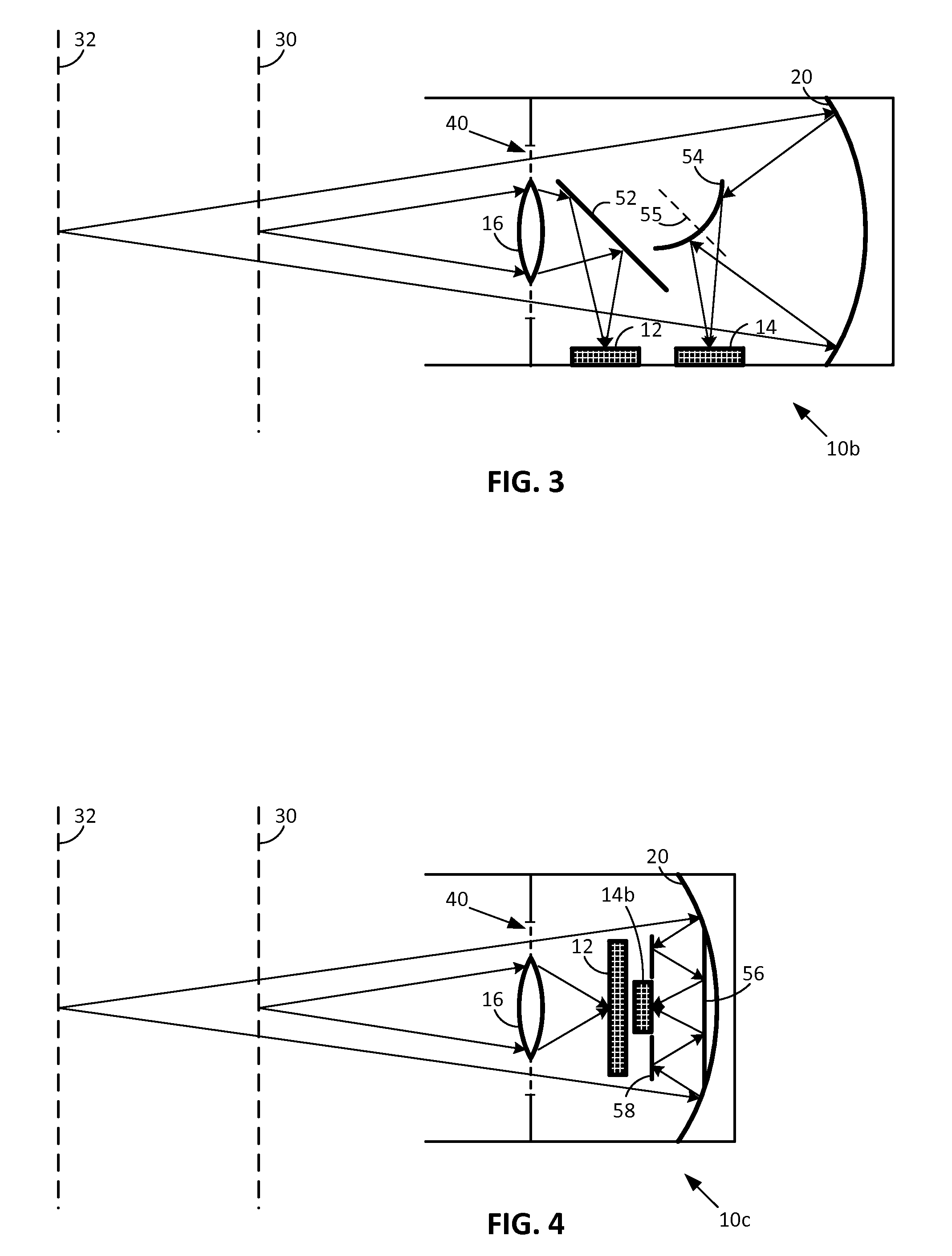Plural focal-plane imaging
a focal plane and imaging technology, applied in the field of imaging systems, can solve the problems of complex image sensor and image processing, and is not suitable for certain applications,
- Summary
- Abstract
- Description
- Claims
- Application Information
AI Technical Summary
Benefits of technology
Problems solved by technology
Method used
Image
Examples
Embodiment Construction
[0009]Referring to FIG. 1, an illustrative camera apparatus 10 includes first and second image sensors 12 and 14, first and second light-transmitting lenses 16 and 18, and first and second mirrors (reflectors) 20 and 22. These elements cooperate to define two collinear imaging systems—each with a respective optical path.
[0010]The first imaging system comprises first sensor 12, and first lens 16. These elements cooperate to capture an image that is projected onto the first sensor from a first focal plane 30.
[0011]The second imaging system comprises second sensor 14, and first and second mirrors 20 and 22. These elements cooperate to capture an image that is projected onto the second sensor 14 from a second focal plane 32. (While mirror 22 is shown as planar, it can take various forms depending on the particular design, e.g., parabolically curved (Gregorian), hyperbolically curved (Casssegrain), spherically curved, etc.)
[0012]As can be seen, the two focal planes 30 and 32 are parallel...
PUM
 Login to View More
Login to View More Abstract
Description
Claims
Application Information
 Login to View More
Login to View More - R&D
- Intellectual Property
- Life Sciences
- Materials
- Tech Scout
- Unparalleled Data Quality
- Higher Quality Content
- 60% Fewer Hallucinations
Browse by: Latest US Patents, China's latest patents, Technical Efficacy Thesaurus, Application Domain, Technology Topic, Popular Technical Reports.
© 2025 PatSnap. All rights reserved.Legal|Privacy policy|Modern Slavery Act Transparency Statement|Sitemap|About US| Contact US: help@patsnap.com



